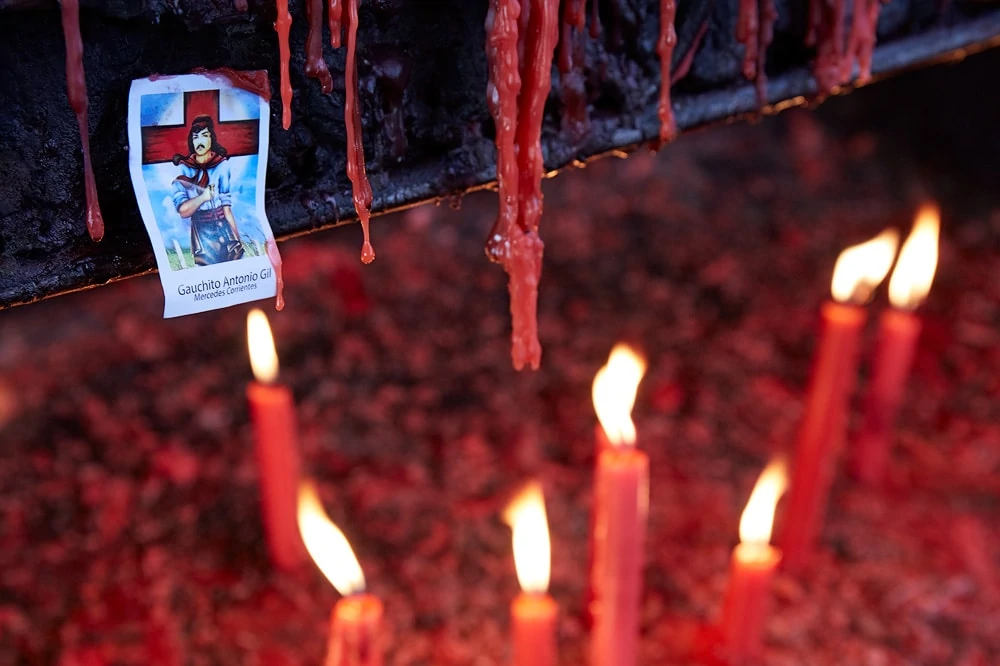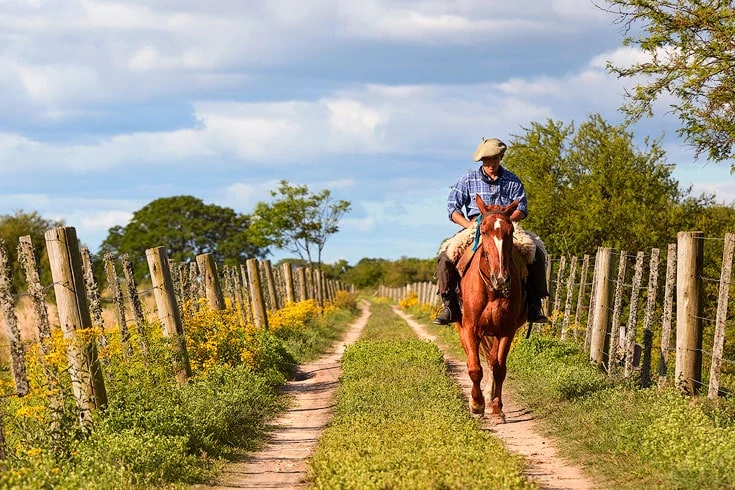The purpose of Argentina Photo Workshops is to offer unique travel photography workshops and to achieve this we rely on the experience of local professional photographers who dedicate their lives to different branches of travel photography. One of these is ethnic portraiture and documentary.
We are interested in photographing the native people, the gauchos and all the humanity that forms the Argentine culture, looking to explore the most genuine roots of this country, its true soul. Through these images we not only have an important historical record, but also the possibility of raising awareness among the public and the photographers who participate in these activities, showing the beauty of diversity and the need to preserve these ancient cultures.
In this article we will focus on the figure of the Gaucho, to know in detail one of the symbols of Argentina. A figure linked to the land and animals, which we find in a good part of the country, under different climatic and cultural conditions.
Gauchos Meaning
The word Gaucho derives from the Quechua (native people) “Huachu” which means: without parents. This term was used in the Rio de la Plata region (Argentina and Uruguay) and even in southern Brazil, to designate the horsemen of the area dedicated to the herding of wild cattle (cimarrón).
Origins
Mixture of Europeans and native peoples. Probably the first Gauchos were marginalized people who broke with the precepts of society and went to the solitude of La Pampa, where wild cattle, grass and water abounded, and above all they were free to roam in the fields.
Formerly they were free men, nomads, or with some pending accounts with the law. They worked in the fields, moving from one “ranchos” to another. Ranchos are rustic houses, with adobe walls (mud mixed with straw) and thatched roofs.
Excellent horsemen, they were in charge of herding the cattle, sawing and other rural tasks.
Gauchos in Argentina
The Gaucho played an important role in the struggle for Argentina’s independence and in most of the conflicts that led to the forging of the nation, for which they are highly respected.
But above all, being a Gaucho is a philosophy of life, being supportive, a friend, a companion, a worker, always skilled in rural tasks.
“To make a Gauchada”, is the best phrase to define a Gaucho. This refers to helping selflessly, the friend, the neighbor and even strangers, supportive and generous above all.
Gauchos - © National Geographic
Gauchos Clothing
The original clothing of the gaucho includes: white underpants, colt boots, chiripa, shirt, neck scarf, sash, bombacha de campo (large trousers), boina, cinturón tirador (belt), poncho and sombrero (hat), to which it accompanies ties, boleadoras (depending on the region) and facones.
Inseparable from its horse and its accessories: the rebenque, the espuelas, the estribos and the montura.
El Facón: the Gaucho's Weapon
The gaucho is armed with the knife he has inherited from the Spaniards: facón.
For the gaucho, the knife is much more than a weapon: it is an instrument that serves him for all his daily occupations and he cannot live without it.
The facón is carried hooked in the sash behind the waist, in the lumbar area. On festive occasions, a sash is worn and above it a belt called a “cinturón tirador” decorated with coins and a buckle or harrow made of precious metals (gold and silver).

Customs and Traditions
During the breaks from work, the gaucho drinks bitter “mate” and eats charcoal-grilled meat, the famous Asado!! Among his most typical foods are also “empanadas”, “locro”, “guiso” and “pastelitos de dulce de membrillo o batata”.
They are also expert guitarists and dancers. Their most frequent dances are the “Pericón” and the “Malambo”, which today are typical Argentine dances.
The Taba game
The Taba game has ancient origin, which goes back to the Indo-European civilizations and arrives in Argentina by the hand of the Spanish conquerors.
It was built with one of the bones that form the tarsus of cattle. This bone has a concave S-shaped face (called “meat” or “luck”, and another flat one called “ass”). In order to avoid the consequent deterioration and to improve its lines, some cut-out metal plates were applied to it, in which the owner’s initials were generally engraved.
The “cancha” (game field) is a clear land, several meters long, and was cut with two lines, which define the space that the “Taba” should go through before touching the ground. It was thrown to the ground as a dice. If the “luck” was upwards, the shooter won, but if he fell showing his “ass”, the opponents won.
In some of these games, bets were made, and occasionally with large amounts of money.
The taba, as a game of luck, already existed in Ancient Greece. Numerous objects and marble sculptures of the time represent people having fun with the taba.
The Gauchito Gil: authentic folklore
The Gauchito Gil is a folkloric-religious figure, object of great popular devotion in Argentina.
There are still different versions in circulation, the origin of the myth resides in the figure of Antonio Plutarco Cruz Mamerto Gil Núñez, generally represented in the typical gaucho clothing.
The Gauchito Gil loved dances and parties and had an excellent handling of the facón. His hypnotic look was fearsome for his enemies and devastating for women.
He was a rural laborer, who suffered the horrors of fighting in a war between brothers (the War of the Triple Alliance), and was later recruited to be part of the militias that fought the Federals.
Legend counts that “Ñandeyara”, the Guarani god, appeared to him in his dreams and said: “You don’t want to spill the blood of your fellow people”. The Gauchito did not hesitate any more and deserted from the Army.
A true rebellious soul, loved and protected by the people.

Such is the devotion to the “Gauchito Gil” that a sanctuary has been built, in a site near the place of his death (located about 8 kilometers from the city of Mercedes), which receives hundreds of thousands of pilgrims every year.
The cult of the “Gauchito Gil” has extended from Corrientes to the rest of the country, being observed along the routes, many “red” sanctuaries in his honor.
The Gaucho in Literature
Around the gauchos, is formed the gaucho literature. A sub-genre of Latin American literature that tries to recreate the language of the gaucho and tell his way of thinking and living.
The gaucho as the protagonist of stories and tales in open spaces of nature, such as the Argentine pampas. A tale of rural life and customs.
El Gaucho Martín Fierro
The “Gaucho Martín Fierro” is one of the most important literary works of the gaucho genre, written by the Argentine poet José Hernández in 1872. To which is added a continuation, entitled “La Vuelta de Martín Fierro”, written in 1879.
In these works, the gaucho stopped being a man “outside the law” to become a national hero. The book has been published in hundreds of editions and translated into more than 70 languages.
Don Segundo Sombra
Another important work of gaucho literature is “Don Segundo Sombra”, first published in 1926. A rural Argentinean novel by Ricardo Güiraldes, a writer from San Antonio de Areco.
Unlike Martin Fierro, Don Segundo Sombra does not socially claim the gaucho, but evokes him as a legendary character.
The Gaucho, skillful horseman, brave, free, faithful, just and above all willing to do “Gauchadas”, is one of the symbols that defines the Argentine cultural identity.
If someone calls you “Gaucho”, is praising you, be proud !!


